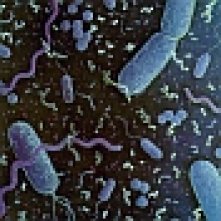
Bacteria are not dumb. Israeli researchers have proven that these pathogens can anticipate a future event and prepare for it. The discovery - just published in the prestigious journal Nature - is not merely a curiosity. The scientists believe that if bacteria gain the genetic ability to prepare themselves for the next step in a process, the conditioned response could be used for fermenting plant materials and producing more efficient biofuels.
Prof. Yitzhak Pilpel, doctoral student Amir Mitchell and research associate Dr. Orna Dahan of the Weizmann Institute’s molecular genetics department, together with Prof. Martin Kupiec and Gal Romano of Tel Aviv University, examined microorganisms living in environments that change in predictable ways. They discovered that these microorganisms’ genetic networks are hard-wired to “foresee” what comes next in a sequence of events and begin responding to the new state of affairs before its onset. This evolutionary adaptation is believed to enhance survival in many organisms - and may also take place in the cells of higher organisms. For example, E. coli bacteria, which normally cruise harmlessly down the digestive tract, encounter a number of different environments on their way. They find that one type of sugar - lactose - is invariably followed by a second sugar - maltose. The researchers checked the bacterium’s genetic response to lactose and found that, in addition to the genes that enable it to digest lactose, the gene network for using maltose was partially activated. When they switched the order of the sugars, giving the bacteria maltose first, there was no corresponding activation of lactose genes -- implying that bacteria have “learned” to get ready for a serving of maltose after a lactose appetizer.
Another bacterium that experiences consistent changes is wine yeast. As fermentation progresses, sugar and acidity levels change, alcohol levels rise and the yeast’s environment heats up. Although this system is somewhat more complicated that that of E. coli, the scientists found that when wine yeast feel the heat, they begin activating genes for dealing with the stresses of the next stage. Further analysis showed that this anticipation and early response is an evolutionary adaptation.
Ivan Pavlov first demonstrated this type of adaptive anticipation, which has since been known as a conditioned response, in dogs in the 1890s. He conditioned the dogs to salivate in response to a stimulus by repeatedly ringing a bell before giving them food. In the microorganisms, says Pilpel, “evolution over many generations replaces conditioned learning, but the end result is similar.”
To see whether the microorganisms were truly exhibiting a conditioned response, Pilpel and Mitchell devised a further test for the E. coli based on another of Pavlov’s experiments. When Pavlov stopped giving the dogs food after ringing the bell, the conditioned response faded until they eventually ceased salivating when it rang. The scientists did something similar, using bacteria grown by Dr. Erez Dekel, in the lab of Weizmann Prof. Uri Alon, in an environment containing lactose, but not following it up with maltose. After several months, the bacteria had evolved to stop activating their maltose genes at the taste of lactose, only turning them on when maltose was actually available.
